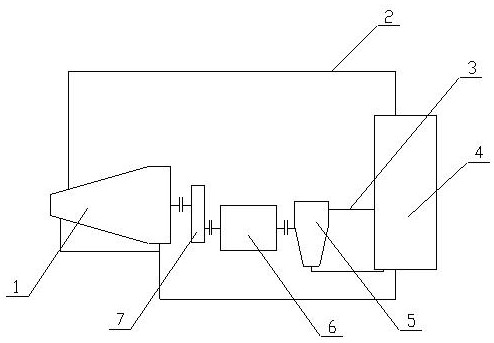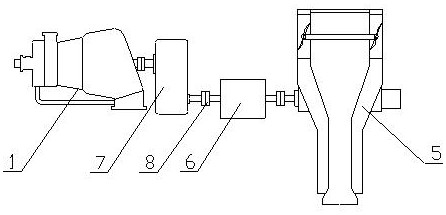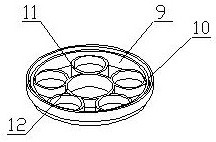A method and device for sintering vertical cooling main extraction steam-electric dual-drive waste heat regeneration power generation
A waste heat and sintering technology, which is applied in steam engine installations, waste heat treatment, machines/engines, etc., can solve the problems of insufficient heat exchange, heat exchange failure, and poor control stability, so as to increase the utilization rate of waste heat and avoid stress. Uniform, guaranteed stability
- Summary
- Abstract
- Description
- Claims
- Application Information
AI Technical Summary
Problems solved by technology
Method used
Image
Examples
Embodiment Construction
[0036] The invention is a method for sintering vertical cooling main extraction steam electric double drive waste heat regeneration power generation method, which is characterized in that: the sintering vertical cooling main extraction steam electric dual drive waste heat regeneration power generation device is used for sintering vertical cooling main extraction steam electric dual drive waste heat regeneration power generation Methods.
[0037] Specifically include the following steps:
[0038] 1) Adopt sintering vertical cooling main extraction steam electric double drive waste heat regeneration power generation device for vertical cooling
[0039]The high-temperature sintered ore falls from the sintering trolley and enters the vertical cooling furnace through the distributing device after being crushed. The reverse airflow drawn in by the main exhaust fan (5) is mixed, and the airflow drawn by the sintering main exhaust fan (5) is split through the diverting component, ful...
PUM
 Login to View More
Login to View More Abstract
Description
Claims
Application Information
 Login to View More
Login to View More - R&D
- Intellectual Property
- Life Sciences
- Materials
- Tech Scout
- Unparalleled Data Quality
- Higher Quality Content
- 60% Fewer Hallucinations
Browse by: Latest US Patents, China's latest patents, Technical Efficacy Thesaurus, Application Domain, Technology Topic, Popular Technical Reports.
© 2025 PatSnap. All rights reserved.Legal|Privacy policy|Modern Slavery Act Transparency Statement|Sitemap|About US| Contact US: help@patsnap.com



